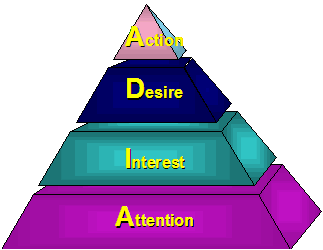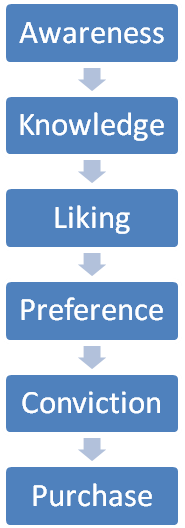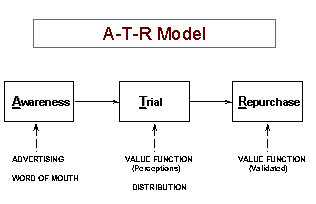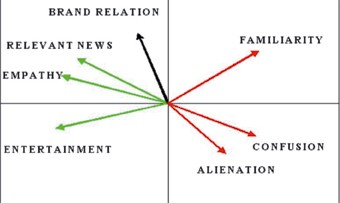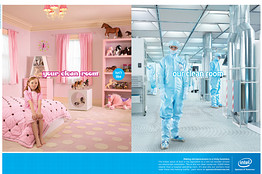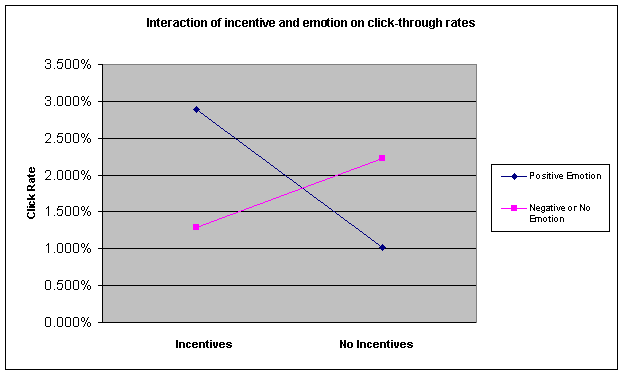“Is advertising more effective when people like it”
One of the major challenges of any organization is to understand its potential customers. This is related to external factors. Advertisement (Ad) is an effective technique to control this factor. Advertising is the subset of the marketing mix.
“Dunnetal (1978) viewed advertising from its functional perspective, hence they define it as a paid, non-personal communication through various media by business firms, non-profit organizations, and individuals who are in some way identified in the advertising message and who hope to inform or persuade members of a particular audience.” (Ayanwale et al, 2005, p.1).
“While David Ogilvy opines that “A good advertisement sells the product without attention to itself.” (Definition: Advertisement: Advertisement Quotations, 2009, para.3).It indicates that there is no special attention by consumers in the advertisement. That is, good advertisement can attract the customer automatically. A good advertisement should comply with the target customers’ attitudes, beliefs, emotions, etc…
Advertisement has great importance nowadays. In this competitive environment the companies give importance to the best advertising medium in order to deliver their message to customers. IBM depends on television ads for delivering its message to customers. It also depends on newspapers and magazines for educating their customers regarding the new software’s. “Critics of advertisement argue that much advertising persuasive and does not add to consumer knowledge of the market. Moreover exaggerated claims can mislead the consumer.” (What is Advertisement? 2009, para.4).
The major purpose of firms behind the advertisement is to generate influence in consumers regarding their products. The advertisement promotes products or services and creates repeat purchasing behavior to maximize profit of the firm. People will not buy the product or service after just watching the ad. There would be different processes undertaken in order to purchase the product. So, advertisement will not have much effect on immediate sales results. Advertisement is a long-term phenomenon. The result will be obtained after certain period. In social contexts ads have much application. For example, reducing smoking, increasing voting etc… “The advertising standards authority works to keep advertising legal, decent, honest and truthful and it judges advertisements, direct marketing and sales promotions against a set of codes.” (How to complain? n.d, para.1).
Whether advertisement effective on consumer behavior
There are lots of factors that influence consumer behavior. Style of advertisement, nature of the products, brand image etc is some of the factors that contribute to the consumer behavior. According to Gordon brown advertisements is people are simply storing in the mind for later uses. When a person needs to purchase toothpaste, he will go to a particular shop. How did he get the information regarding that shop? No doubt, it is only because of the advertisement. This is the simple example of effectiveness of the advertisement. “Much buying behavior is more or less repetitive and the buyer establishes purchase cycles for various products which determine how often he will buy.” (Howard & Sheth n.d., para.3).
Nowadays business is more related to customer. Different factors influence the purchasing decision of the consumer. Here, the importance of consumer behavior analysis takes place. Consumer behavior analysis applies the basic principles to real life consumers. So, consumer behavior analysis is helpful to reduce the communication errors and can apply appropriate innovative advertising strategies in the advertisement. But the main problem is the variation of consumer behavior according to the geographical situations. The MNCs have to develop unique ideas while creating the advertisement in order that the advertisement is liked by consumers.
Different theories have been developed to know how advertising influences the customer. These theories are used by the advertisers in their marketing programs. Different researches were made in order to measure the audience responses way back in 1920. There were restricted commercial media, limited product availability; and consumers were frequently involved in important decision-making processes during that period. It caused to develop the importance of advertisers in the market. This condition generated AIDA model. Elmo Lewis was the developer of this model. “In Strong’s AIDA model stages of selling are Attention, Interest, Desire, and Action.” (The AIDA model n.d).
The first stage is attention of the customer. Selling person shows the attention to the customer by appearance of product or any other way. Second stage is important in the process. If a perfect communication takes place with the wrong target customer, it would not create interest in the customer and could not perfectly deliver the product. So an effective advertisement can create interest in the appropriate target customer. If a customer is attracted by the advertisement he will try to gather more information regarding the product. If his requirement is appropriately related to the product features he would take action.
Action is regarding the purchasing decision of the product (figure 1). During the 1960s some researches took place regarding the influences on consumers. Research by Bauer (1958), Bauer &Bauer (1960), and Klapper (1960) mentioned the limited influence of mass media. “Communication and advertisement research demonstrated that, when an audience was exposed to a persuasive message regarding an important issue, only a small percentage ever changed their opinion (Bauer 1964).” (Smith & Swinyard 1982, para.2).
So, consumers were active to use selective defense mechanisms during that period (e.g. discounting). Another important consumer response model (hierarchy model) was developed by Lavidge and Steiner in 1961. According to this model there are six factors involved in the process of purchasing decision of the consumer. They are awareness, knowledge, liking, preference, conviction, and purchase (figure2). This is another model for advertisement effectiveness. This is also called persuasive model. Awareness, knowledge, liking, preference, conviction, and purchase are the sequential factors regarding the purchase of product by consumer. It indicates that any deviation from this process cannot reach the end result. “Advertising may be the thought of as a force, which must move people as a series of steps. It consists of seven steps.” (Lavidge & Steiner 1961, para.5).
When consumer makes an attention to the product he gets awareness regarding the product. The factor knowledge involves when he knows the features regarding the product. When his knowledge related to the product is favorable to his attitudes, he likes the product. When the favorable attitudes grow according to his requirements he will prefer the product. Conviction stage occurs when he has desire to purchase the product. Finally, actual stage of purchase occurs. According to Lavidge and Steiner these are the processes occurred during the purchase of a product.
AIDA and Lavidge and Steiner models are called traditional models. Besides these models, there are some other models regarding the pattern of consumer influences in the purchase of a product. Daniel Starch indicates that advertisement becomes effective when the customer sees the advertisement, reads the ad, believes the ad, remembers and acts according to the advertisement. Russell H Colley in 1961 indicated that the factors are unawareness, awareness, comprehension, conviction, and action. Many people criticized these models on consumer behavior. Psychologists mentioned it as “cognitive-affective- co native or C-A-C pattern of response of stimuli other than the advertisement. It responses are the outcome of thinking about what is happening, affective responses result from an emotional reaction to the stimulus, and conative responses involve consequent actions.” (Hierarchy-of-effects: Definition 2002, para.1).
While considering the cognitive responses are consequence of thinking of stimuli, effective responses are the emotional reaction of the stimuli and conative responses are the consequence of actions. Lavidge and Steiner’s model is nowadays considered a generic term. While considering the AIDA it was so complicated. E M Rogers in 1962 mentioned innovations and William J McGuire in 1969 mentioned the information process. In the case of hierarchical model Christian Palda criticized that in the case of impulse buying, deliberate step-by-step progression is implied by the hierarchical model. The other one was that there was no evidence on effective change necessarily preceded behavior change rather than resulting from it.
Lavidge and Steiner’s model didn’t give the clarity in the process. ”Palda’s testing of the hierarchy of effects model led him to conclude that higher awareness did indeed coexist with higher purchasing rates but that there was no causative link, as Lavidge and Steiner had theorized.” (Healey 1974, pp.384-392).
Professor Ehrenberg and his colleagues based on the research supporting the Palda’s opinions that attitude change in consumers will cause to arise the new behavior rather than causing it. Ehrenberg developed the new model called ATR model. According to Ehrenberg, advertisement is helpful to maintain the customers and increasing the purchases by them. There are only three factors (awareness, trial, repurchase) involved in the ATR model (figure 3). The majority of the customers would know about the product either by brand or related requirement. There are two types of customers. One category of customers may not have the interest to make the trial.
That may be due to lack of requirements or misconception about the awareness of concerned product. Others will try to undertake an experiment with the product. This comes under the stage of trial. The third stage indicates that if the product satisfies the consumer requirements he will repurchase the product. In his point of view he gives importance to the quality of the product. The consumer will be attracted to the product if he gets the satisfaction through usage of the product. This theory is against the view of AIDA or hierarchical sequence model. The consumer will be influenced by the product through practical experience of the product.
There are lots of factors involved in the effectiveness of advertisement. Advertisement is the most effective method. Sometimes, it may cause positive or negative perceptions. Positive perception leads to purchase of the products. If the first advertisement couldn’t capture the customer’s attention, sometimes repetition in the advertisement may be capable to capture the customer. Leong (1998) indicated that online media is efficient rather than the traditional media. Urbick (2008) indicated that effective advertisement can capture the attention of children as they try to behave like advertisement models.
Gender influence on consumer behavior: Boys like pictures and sounds of the ads while girls like words involved in the advertisement. It shows that boys are more influenced by the external factors in the advertisement, and they are influenced by emotions in their decision-making. Girls are rational decision-makers because they can be influenced only by content of the ads rather than the external factors.
Role of emotions in the advertisement
“The word emotion includes a broad repertoire of perceptions, expressions of feelings and bodily changes.” (Psychology of behavior n.d).
Naveen Donthu, Ritu Lohtia conducted study on the topic of emotional appeal and incentive offering in banner advertisement found that banner ads with positive induced emotions will result in higher clicks rather than ads with negative or no emotion (figure 6). There are two categories of people in the society. The first category likes to watch advertisements. Another category does not like to watch advertisements. The ad will not be effective in the second category of people. People in the first category support the advertisement. They believe that advertisements can give the information regarding the product or services. If they are attracted by the advertisement, they will try to gather more information about the product and finally may buy the product. If ad caused to strike the consumer emotion in these categorized people, one can say that the advertisement is effective. Emotions will cause to affect the decision-making of the customer. There are two dynamic thinking in the people.
The first choose the product according to perceived requirement and another one is based on the selection of the brand. In both the cases, there is influence of emotion in their decision-making. For example, if a very poor person with little to eat chooses branded products, it is not because of the rationale. But it’s because of emotion. Style of the advertisement also influences consumer behavior. For example, consider a car advertisement. There is a young man and a lady involved in the advertisement wearing modern beautiful dresses and young man drives the car and they chit-chat with each other. This type of advertisement will cause to move young people. The main criticism against this type of advertisement is that it makes people buy what they don’t need. It indicates that persuasive power of advertising makes consumers behave like models in the advertisement. Besides positive emotions, advertisers also use the negative emotions according to the situations in order to capture the customer. Insurance companies, healthcare institutions, drugs and alcohol clinics use negative emotions in order to utilize the fears of consumers such as cardiac diseases.
Role of innovation in the advertisement
Innovative ad has a major role in advertisement. It can capture the mind of consumers. In recent years Intel developed different brands such as, Centrino, an umbrella name for its laptop chips. One Intel ad shows a pink-colored room. A lady is sitting in the bed and labeled as your cleanroom. Near the picture, there are engineers of Intel in the chip factory wearing bunny suits and labeled as our clean room (figure 5). It shows that the company‘s operating environment is better than Operation Theatre.
One of the most successful ads is apple’s 1984 at the time of launching the Macintosh computers.” In an echo of George Orwell’s, novel 1984, the ad depicts big brother lecturing the faithful through a giant screen in an auditorium. A young woman athlete running down the gangway with a sled hammers and hurls it at the screen, smashing it to bits.” (Tellis 2004, p.20). There was good response to this advertisement. Sale of more than 72,000 units took place that year.
Whether ad like caused to buy
Russell Haley and Allen Baldinger in the journal of advertising research (April /May 1996) showed that ad-liking is helpful to increase the advertising effectiveness. But, Butch Rice, who argues in the journal of advertising research (May/June 1998), indicated that a person may not buy the product when he likes the advertisement. But, he will buy the product when he notes and loves the product. That is, effectiveness of advertisement comes out only when customer notes and loves the product. Prof. Ehrenberg used a term double jeopardy to explain the relation between buy and advertisement. According to him, people will only buy the product when they note the advertisement. The argument was that it works only in certain categories of people. But some others opine that advertising effectiveness is a multi-dimensional factor.
That is not a single-dimensional factor. So, Rice model implies there are sequential factors that cause the effectiveness of advertisement. Brand usage, ad noting, and ad liking are the interrelated factors. Customers will note and like the advertisement through brand usage. Hollis model also indicates that there are lots of factors involved in the effectiveness of advertisement, in which ad liking is only one. It indicates that ad liking is only one reason behind the purchase of a product. Other factors also contribute to the purchase of a product. Dutch SPOT study reveals that there are seven factors involved in ad liking (figure 4). Brand relation, relevant news, empathy, entertainment, familiarity, confusion, and alienation are the factors relating to ad liking. But, debate on ad liking reveals that many people believe that ad liking is related to emotion.
Conclusion
Every organization would like to increase the effectiveness of their advertisement. Most of the organizations have been trying to utilize emotions of the people in order to increase the effectiveness of advertisement. As far as the advertisement of a product is concerned, it will take time to get the result. Different processes take place to develop the purchasing decision of the customer. If the ad is good, there would be more discussion regarding the product features and the people will discuss the concerned product. Emotions, innovation, technology used in the ad also influence the consumer. “One of the most critical concerns advertisers express about television advertising is the potential decline of the persuasive impact of TV spots because of increasing clutter in the media environment.” (Moore & Harris 1996).
Advertisers have been using both positive and negative advertising to capture the mind of consumers according to the situations (figure 7). There was more discussion on impact of negative ads in the advertising community. Advertising council in its own research indicates that public gives importance to serious issues that affect the people’s health and life (King 1989). It shows that emotional advertising gets more attention than advertising that is presented in a rational model. It shows even negative emotional advertising also makes good impact on the consumer.
That is, whether people like the ad or not, emotional advertising can make an impact on the consumer. “Lowe’s, a very successful challenger to Home Depot, had a brilliant rational argument for shopping at their stores. Their slogan: “Improving home improvement.” So what did they do? They replaced this concept with a more emotional slogan, “Let’s build something together” More silliness.” (Tales from the marketing wars: The emotional trap 2007, para.3).
Major criticism against this type of advertisement is that it may influence the consumer. Emotion may be a cause to like the ad or note the ad. But, it may not be effective the advertisement. There are lots of factors which have to be considered regarding effectiveness of the ads. There would be good brand and advertisement would be interesting. The customer should note the ad. It should match with the attitude of the target customer. The product would have good features and they should match with the requirement of the target customer.
They should be like the ad. Besides, experiences would be an added advantage while choosing the product. Experience indicates the product usage or purchase experiences, opinions of friends or relatives etc. It indicates that ad liking is not the only factor for effectiveness of the advertisement.
Reference List
Advertising. 2009. Dave Dolak. Web.
Ad liking and brand buying a Neurological perspective: What is Ad-Likeability? 2009. The Marketingsite. Web.
ATR framework. Web.
Ayanwale, AB., et al. 2005. The influence of advertising on consumer brand preference. Kamla-Raj. Web.
Definition: Advertisement: Advertisement Quotations. 2009. Brainy Quote. Web.
Healey, J 1974. A model of communication impact and consumer response. Advances in Consumer Research 1, pp.384-392. Web.
Hierarchy-of-effects: Definition 2002. Westburn Publishers Ltd. Web.
Howard, JA & Sheth, JN, A theory of buyer behaviour. Web.
How to complain? ASA. Web.
Intel readies Ad campaign stressing role in innovation. 2009. The Wall Street Journal. Web.
Lavidge, RJ., & Steiner, GA 1961. A model for predictive measurements of advertising effectiveness. American Marketing Association. Web.
Moore, DJ., & Harris, WD 1996. Affect intensity and the consumer’s attitude toward high impact emotional advertising appeals. M E Sharpe, Inc. Web.
Psychology of behaviour, Understanding Human Behaviour, ThinkQuest Team. Web.
Smith, RE., & Swinyard, WR 1982. Information response model: An integrated approach. Journal of Marketing 46, pp. 81-93. Web.
Stomach sickness hangovers to alcohol. 2007, Steadyhealth. Web.
Tales from the marketing wars: The emotional trap 2007. Forbes. Web.
Tellis, GJ 2004. Effective advertising: Understanding when, how, and why advertising works. Sage. Web.
The AIDA model. Blacksacademy. Web.
What is Advertisement? 2009. MBA Notes. Web.
Xie, FT., et al. 2004. Emotional appeal and incentive offering in banner advertisements. Journal of Interactive Advertising 4(2). Web.
Appendix
